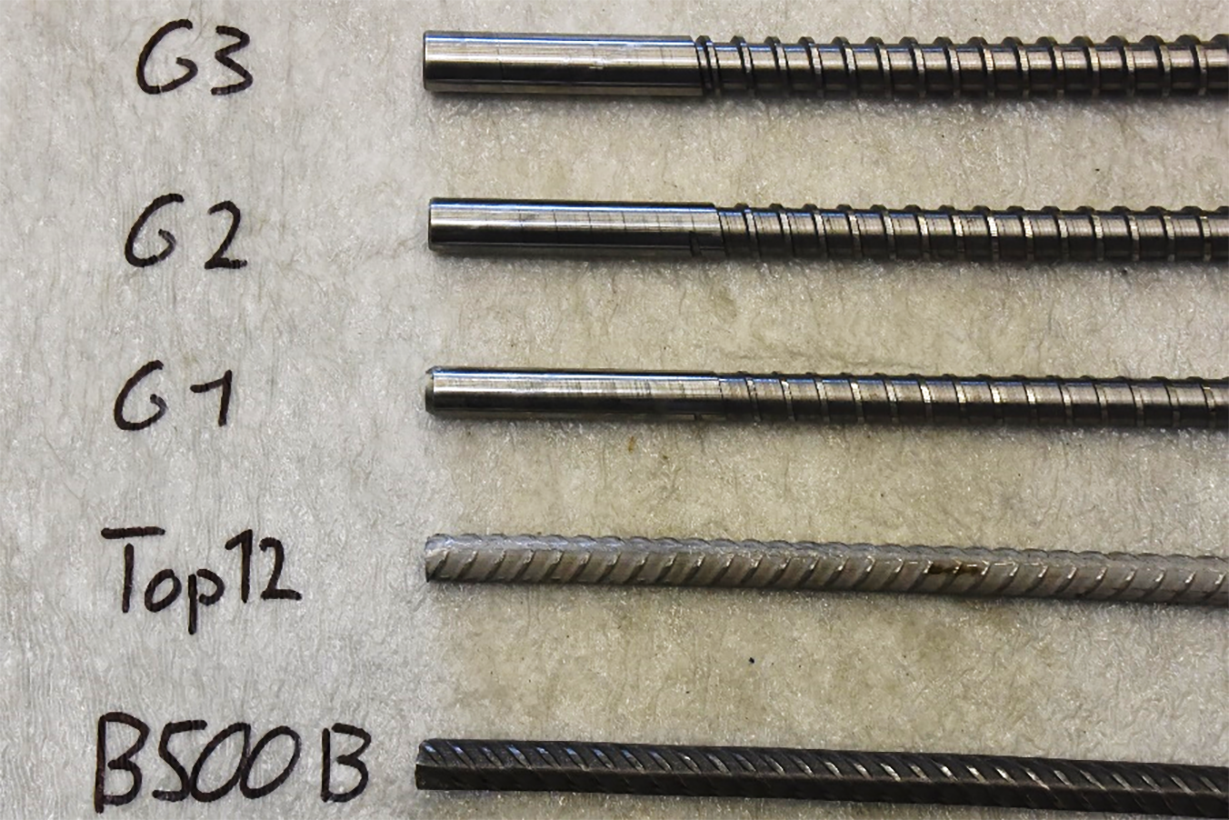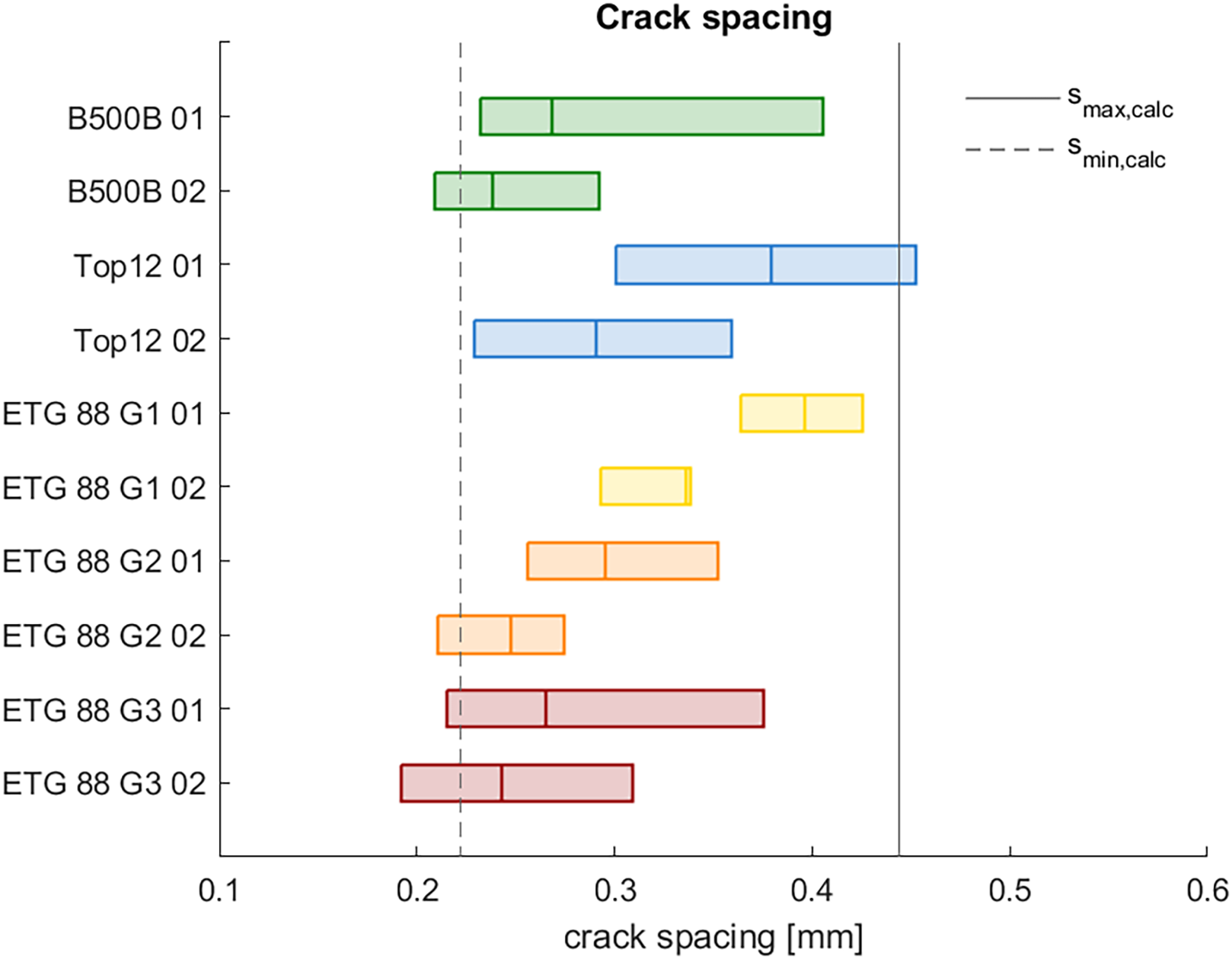Influence of the relative rib area on the serviceability of structural concrete
Author: Dominique Karlen
Language: English
Abstract
Structural concrete is often used in the construction industry due to the advantageous interaction between concrete and steel. Part of this interaction is the bond behaviour, which influences the crack formation and the deformation capacity of structural concrete. The bond is activated by the relative displacement of the two materials (slip) and depends on the relative rib area of the reinforcing bar. The complex bond stress-slip relationship is approximated by a stepped, rigid-perfectly plastic bond stress-slip relationship in the Tension Chord Model developed at ETH Zürich. The requirements given by the codes are based on this relationship and specify that the serviceability of a structural element is verified by limiting the crack widths or the steel stresses.
In this Master's thesis, five different rib geometries were examined. Ten uniaxial tension tests were performed using column-shaped specimens to investigate the influence of the relative rib area on the bond behaviour of the two materials. The tests were recorded using both Digital Image Correlation and Distributed Fibre Optical Strain Measurement.
The tested specimens were compared regarding the cracks that occurred during the tests, evaluating the number of cracks, the crack width, and the crack spacing. As a second aspect, the bond behaviour was investigated by comparing the results with the Tension Chord Model, followed by backcalculating the acting bond stresses. The analysis of the longitudinal cracks was done on a qualitative level. Regarding the evaluation of the cracks, the machined bars with the smallest relative rib area (G1) led to smaller crack widths than the two conventional reinforcing bar types with a similar relative rib area (B500B and Top12) and compared to the other two rib geometries of the machined bars (G2 and G3). As for the calculated bond stress, only one specimen showed a higher value than the assumed bond stress-slip relationship by the code. Possible explanations for the obtained results are the formation of longitudinal cracks during the test and the execution of the rib geometries of the machined bars.
The relative rib area could be neither verified nor disproved (based on qualitative observations concerning the number of cracks) as a suitable parameter to reduce the amount of reinforcement as stated by the codes.


